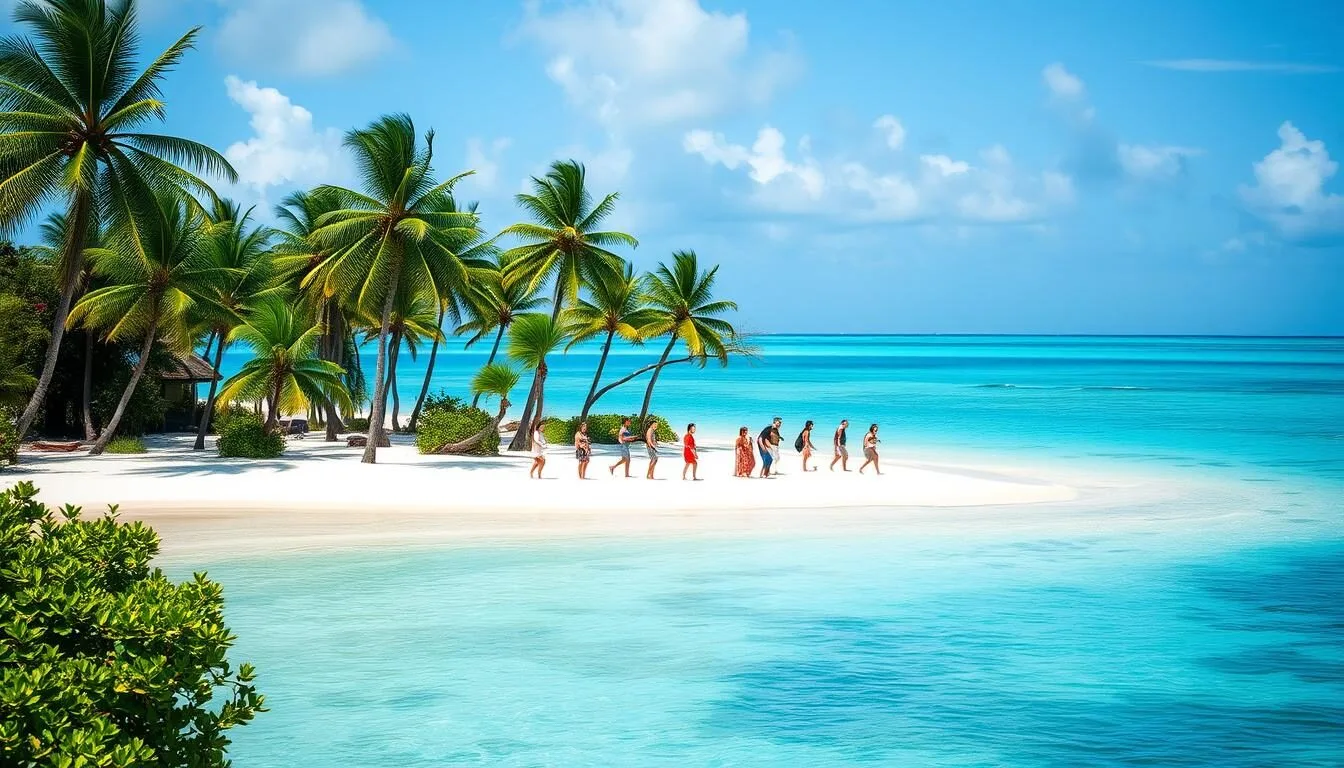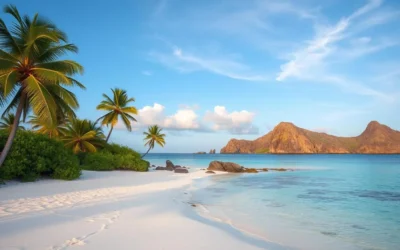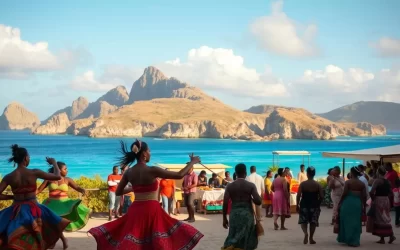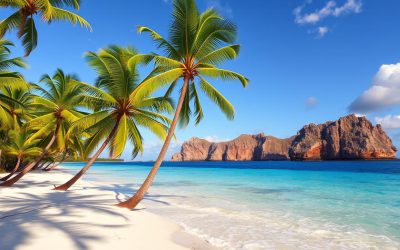Did you know that Nauru welcomes fewer than 200 tourists annually, making it the world’s least visited country? This tiny Pacific island nation, covering just 21 square kilometers, offers a truly unique travel experience in its capital district of Yaren. As one of the smallest independent republics on Earth, Nauru challenges everything you thought you knew about remote island adventures.
From pristine beaches and fascinating World War II remnants to phosphate mining history and vibrant local culture, Yaren presents travelers with an extraordinary opportunity to explore a destination that few will ever experience. Whether you’re seeking cultural immersion or off-the-beaten-path exploration, this guide will reveal the hidden treasures of this remarkable Pacific island.
Getting There & Planning Your Journey
Reaching Nauru requires some planning, as it’s one of the world’s most remote destinations. Nauru Airlines is the only carrier serving the island, with limited flights from Brisbane, Australia, and Nadi, Fiji. Flights operate just once or twice weekly, so booking well in advance is essential.
The closest international airport is Nauru International Airport (INU), located in Yaren district. Despite its small size, the airport handles all international arrivals and departures for the island nation.
Ready to Begin Your Nauru Adventure?
Book your flights early to secure the best rates for this unique destination.
Visitors to Nauru require a valid passport and visa. Visas can be obtained in advance from Nauruan diplomatic missions or upon arrival for citizens of certain countries. The visa application process typically requires proof of accommodation, return flights, and sufficient funds for your stay.
Travel insurance is highly recommended due to the remote location and limited medical facilities on the island. Ensure your policy covers medical evacuation, as serious medical emergencies may require transport to Australia.
Best Time to Visit & Weather Tips

Nauru has a tropical climate with high temperatures and humidity year-round. The average temperature hovers between 24°C and 32°C (75°F to 90°F) throughout the year, with minimal seasonal variation.
Recommended Months to Visit
The best time to visit Yaren, Nauru is during the dry season from May to October. During these months, you’ll experience:
- Lower humidity levels
- More stable weather conditions
- Refreshing northeast trade winds
- Ideal conditions for outdoor activities
- Perfect weather for exploring beaches and historical sites
Months to Avoid
The wet season from November to February brings heavy rainfall, increased humidity, and occasional strong winds. While you can still visit during this period, outdoor activities may be limited, and some areas might be difficult to access due to flooding.
| Season | Months | Weather | Recommendation |
| Dry Season | May – October | 24-32°C (75-90°F), low rainfall | Highly recommended |
| Wet Season | November – February | 26-34°C (79-93°F), heavy rainfall | Not recommended |
| Transition | March – April | 25-33°C (77-91°F), decreasing rainfall | Acceptable |
Pro travelers recommend spending 4-5 days in Nauru to fully experience all that the island has to offer without feeling rushed.
Getting Around Locally
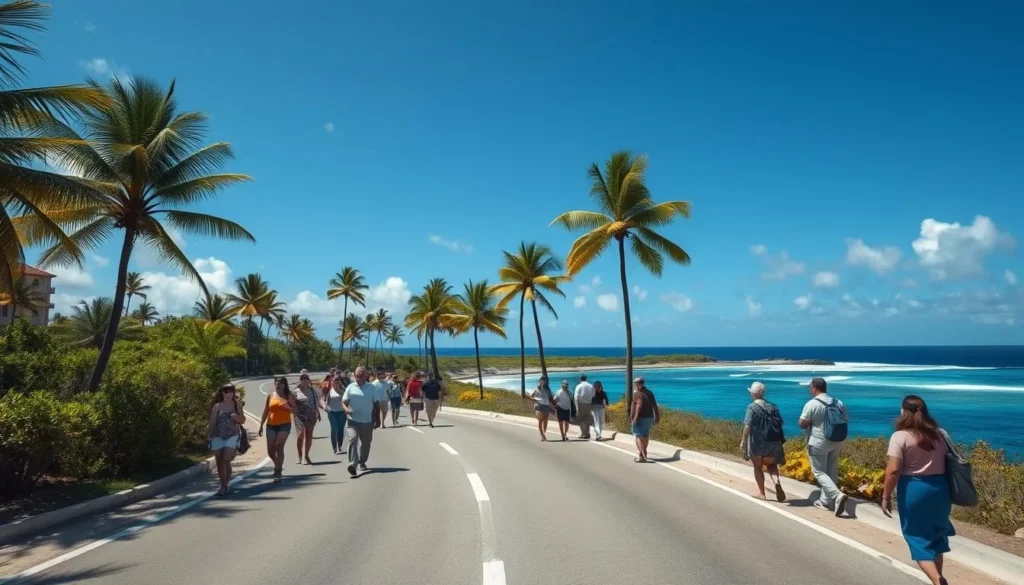
Navigating Yaren and the rest of Nauru is surprisingly simple due to the island’s small size. The entire country can be circumnavigated by car in just 30 minutes via the 19 km (12 mile) coastal road that encircles the island.
Transportation Options
- Rental Cars: The most convenient way to explore Nauru is by renting a car. Several small rental agencies operate near the airport and hotels.
- Taxis: Limited taxi services are available, primarily serving the airport and main accommodations.
- Walking: Many attractions within Yaren district are within walking distance of each other.
- Bicycles: Some accommodations offer bicycle rentals, which are perfect for exploring the coastal road.
Explore Nauru at Your Own Pace
Rent a car to discover all the hidden corners of this fascinating island nation.
Public transportation is virtually non-existent in Nauru, so planning your own transportation is essential. Most visitors find that renting a car for at least part of their stay provides the most flexibility for exploring the island’s attractions.
The road conditions are generally acceptable, though some inland roads may be unpaved or in poor condition due to past phosphate mining activities. Drive cautiously and be aware that local driving customs may differ from what you’re accustomed to.
Where to Stay
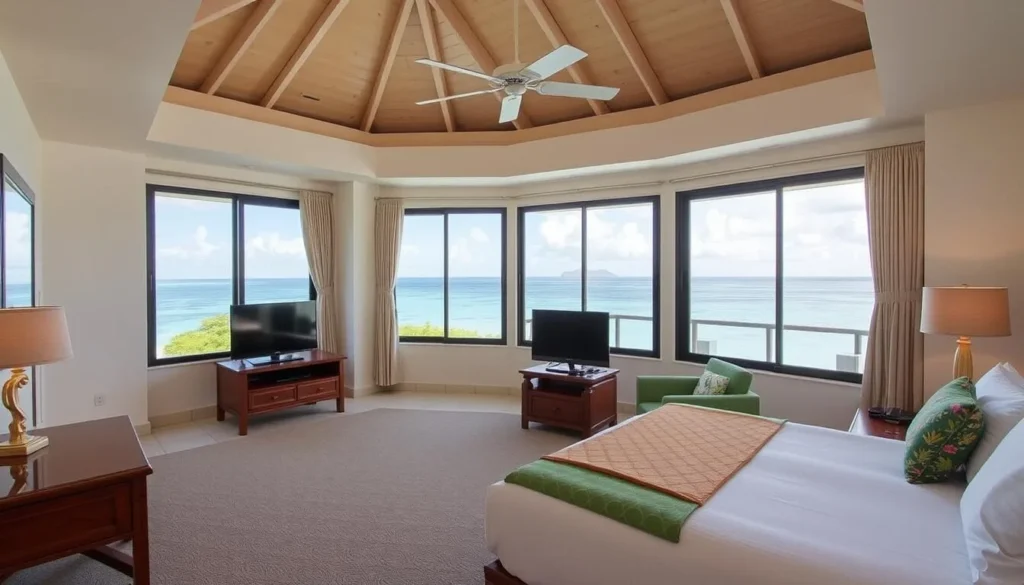
Accommodation options in Nauru are limited but sufficient for the small number of visitors the island receives. Most lodging is concentrated in or near Yaren district, providing convenient access to the airport and main attractions.
Recommended Accommodations
Menen Hotel
The largest and most established hotel on the island, offering comfortable rooms, a restaurant, and a swimming pool. Located in Anibare district with ocean views.
- Price range: $100-150 USD per night
- Restaurant and bar on premises
- Air-conditioned rooms
- Free Wi-Fi
Od’n Aiwo Hotel
A smaller, budget-friendly option located in Aiwo district. Basic but clean accommodations with a restaurant serving local and international cuisine.
- Price range: $70-100 USD per night
- Central location
- Restaurant on site
- Basic amenities
Guesthouses
Several family-run guesthouses offer an authentic local experience. These provide basic accommodations with the opportunity to connect with Nauruan families.
- Price range: $50-80 USD per night
- Authentic local experience
- Often includes home-cooked meals
- Limited availability – book early
Due to limited options, it’s highly recommended to book your accommodation well in advance, especially if visiting during the dry season (May to October) when visitor numbers are slightly higher.
Dining & Local Cuisine

Nauruan cuisine reflects the island’s Pacific heritage, with a strong emphasis on seafood, coconut, and imported staples. While dining options are limited, they offer a fascinating glimpse into local food culture and the unique challenges of sustaining a population on a remote island.
Traditional Nauruan Dishes
- Coconut Fish: Fresh fish cooked in coconut milk with local spices
- Ika: Raw fish marinated in citrus juice, similar to ceviche
- Taro: A starchy root vegetable prepared in various ways
- Pandanus Fruit: Used in desserts and sweet preparations
Where to Eat in Yaren
Dining establishments in Nauru are primarily found within hotels, with a few independent restaurants and small eateries scattered around the island. In Yaren district, you’ll find:
Hotel Restaurants
Both the Menen Hotel and Od’n Aiwo Hotel have restaurants serving a mix of local and international cuisine. These are the most reliable options for visitors, offering consistent quality and service.
Local Eateries
Small, family-run eateries can be found near the government buildings in Yaren. These offer authentic local dishes at reasonable prices, though opening hours may be irregular.
“Food is the heartbeat of Nauruan culture, telling stories through every bite.”
Budget-conscious travelers can expect to spend about $10 to $20 USD for three meals daily. Due to Nauru’s remote location, many ingredients are imported, which can affect both price and availability. Fresh seafood, however, is abundant and features prominently on most menus.
Attractions, Sightseeing & Activities

Despite its small size, Yaren and the surrounding areas of Nauru offer several fascinating attractions that showcase the island’s unique history, culture, and natural beauty. Here are the top sights and activities you shouldn’t miss:
Historical Sites
Command Ridge
Nauru’s highest point at 65 meters (213 feet) above sea level, Command Ridge offers panoramic views of the entire island. During World War II, Japanese forces used this strategic location as an observation post, and you can still see the remains of guns, bunkers, and a communications center.
Japanese WWII Relics
Throughout Yaren and other districts, you’ll find remnants of Japanese occupation during World War II, including a Japanese prison, bunkers, and coastal defense positions. These sites provide a sobering reminder of Nauru’s strategic importance during the conflict.
Phosphate Mining Heritage
The history of phosphate mining shaped Nauru’s economy and landscape. Visit the remains of the phosphate processing facilities in Aiwo district to understand this crucial aspect of the nation’s history and its environmental impact.
Experience Nauru’s Unique Attractions
Book guided tours to make the most of your visit to these historical sites.
Natural Attractions
Anibare Bay
One of Nauru’s most beautiful beaches, featuring white sand and crystal-clear waters. The bay is protected by a man-made harbor, making it one of the few safe swimming spots on the island. It’s perfect for snorkeling, swimming, or simply relaxing.
Buada Lagoon
An unusual freshwater lagoon located in the interior of the island, surrounded by lush vegetation. This natural landmark is a stark contrast to the coastal areas and provides habitat for various bird species.
Moqua Caves
A network of underground limestone caves containing freshwater pools. Located near the airport, these caves offer a cool retreat from the tropical heat and a glimpse into the island’s unique geology.
Museums, Cultural Spots & Festivals
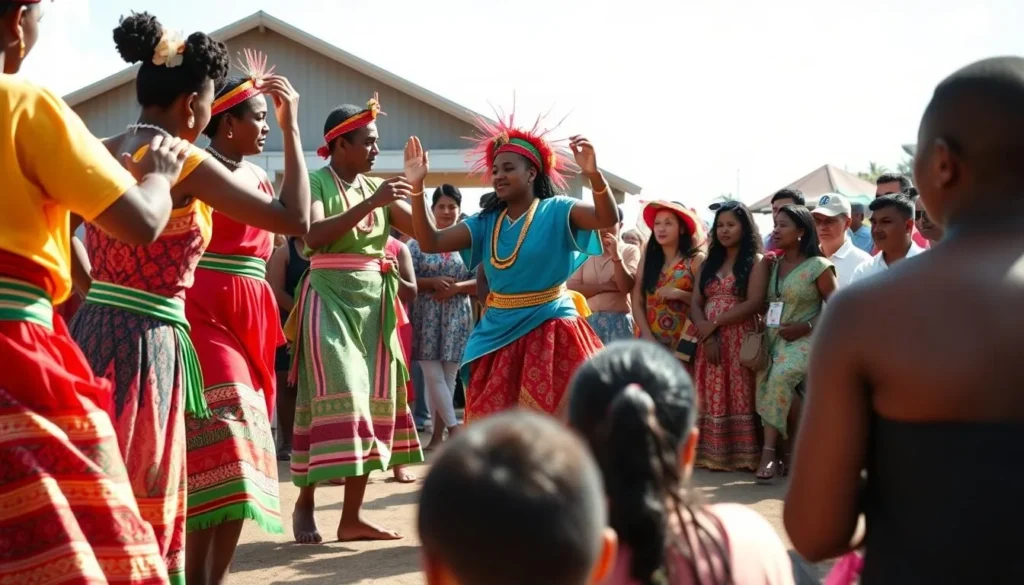
Immerse yourself in Nauruan culture through its museums, cultural sites, and vibrant festivals. While facilities are modest compared to larger nations, they offer authentic insights into this unique island culture.
Museums and Cultural Sites
- Nauru Museum: Located in Yaren, this small museum houses artifacts that tell the story of Nauru’s indigenous culture, colonial history, and phosphate mining era. Exhibits include traditional tools, historical photographs, and cultural items.
- Parliament House: The distinctive parliament building in Yaren represents Nauru’s independence and governance. When parliament is not in session, visitors may be able to tour the building.
- Nauru Community Center: A hub for local cultural activities and occasional performances of traditional dance and music.
Cultural Festivals and Events
Timing your visit to coincide with one of Nauru’s national celebrations can greatly enhance your cultural experience:
| Festival | Date | Description |
| Independence Day | January 31 | Celebrates Nauru’s independence from Australia, New Zealand, and the UK in 1968 with parades, speeches, and cultural performances. |
| Constitution Day | May 17 | Commemorates the adoption of Nauru’s constitution with official ceremonies and community events. |
| Angam Day | October 26 | Honors the survival of the Nauruan people after population declines. “Angam” means “jubilation” or “homecoming.” |
Traditional Nauruan culture places great importance on community gatherings, storytelling, and music. If you have the opportunity, attending a traditional feast or performance will provide insights into local customs that few outsiders ever experience.
Sports, Nature & Outdoor Experiences
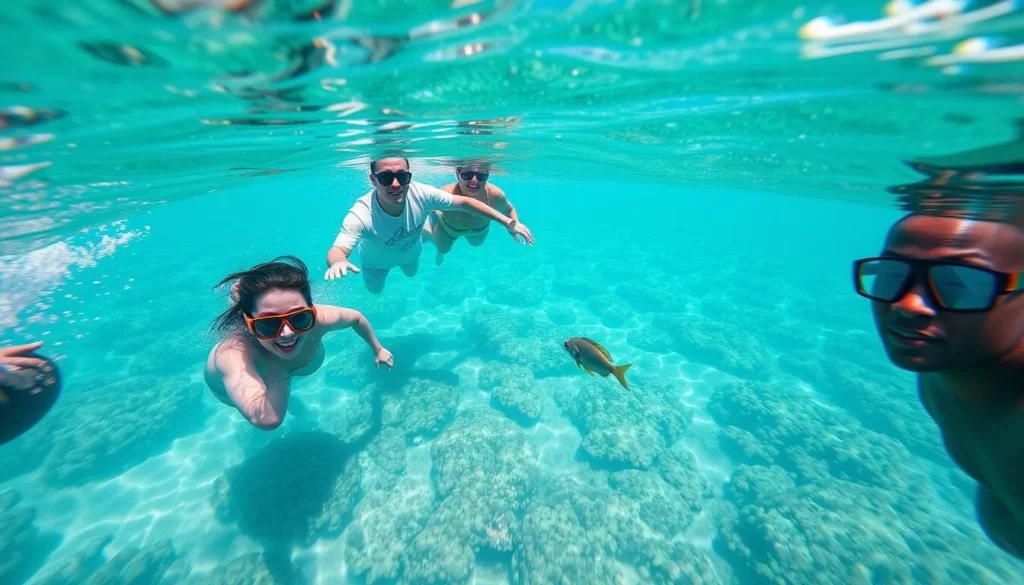
Nauru’s natural environment offers several outdoor activities for visitors who enjoy nature and active pursuits. While facilities are limited compared to major tourist destinations, the island’s unique landscape provides distinctive experiences.
Water Activities
- Snorkeling: The waters around Anibare Bay offer good snorkeling opportunities with colorful fish and coral formations. Bring your own equipment as rental options are limited.
- Deep-Sea Fishing: The waters off Nauru’s coast drop quickly to great depths, creating excellent conditions for deep-sea fishing. Local operators can arrange fishing trips for marlin, tuna, and other pelagic species.
- Swimming: Anibare Harbor provides one of the few safe swimming areas on the island, protected from strong currents by a man-made breakwater.
Land-Based Activities
Walking and Hiking
The coastal road circling the island makes for a pleasant walking route with ocean views. For more challenging terrain, paths leading to Command Ridge offer a short but rewarding hike with panoramic views of the entire island.
Bird Watching
Nauru is home to several seabird species, including frigatebirds, noddies, and terns. The area around Buada Lagoon is particularly good for bird watching, especially in the early morning or late afternoon.
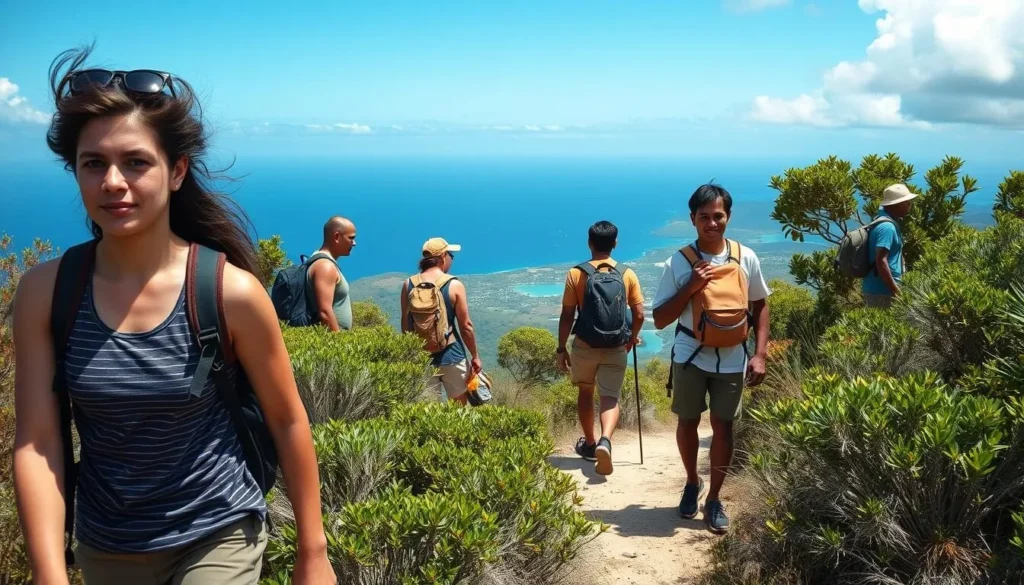
For sports enthusiasts, Nauru has a passionate following for Australian Rules Football, which has become something of a national sport. If you’re visiting during the local season, catching a match provides an authentic glimpse into local recreational life.
Outdoor Safety Tip: Nauru’s equatorial climate means strong sun exposure is a constant concern. Always wear sun protection, stay hydrated, and avoid outdoor activities during the hottest part of the day (11 am to 3 pm).
Safety, Etiquette & Local Customs

Nauru is generally a safe destination for travelers, with low crime rates and a welcoming local population. However, as with any travel destination, it’s important to understand local customs and take basic precautions.
Safety Considerations
- Health Services: Medical facilities in Nauru are basic. The Republic of Nauru Hospital in Yaren provides essential services, but serious medical issues require evacuation to Australia. Comprehensive travel insurance is essential.
- Environmental Hazards: Strong currents and sharp coral make swimming dangerous in many coastal areas. Stick to designated swimming areas like Anibare Harbor.
- Sun Exposure: Nauru’s equatorial location means intense sun radiation. Use high-SPF sunscreen, wear protective clothing, and stay hydrated.
Cultural Etiquette
Nauruans are generally friendly and welcoming to visitors. Observing these cultural norms will help you interact respectfully:
Dress Code
Modest dress is appreciated, especially when visiting government buildings, churches, or local communities. Swimwear should be limited to beaches and swimming areas.
Greetings
A handshake is the standard greeting. Nauruans appreciate basic courtesy and respect. Learning a few phrases in Nauruan, such as “iok omo” (hello) or “ko rab” (thank you), is always appreciated.
Photography
Always ask permission before photographing local people or private property. Some government buildings and phosphate mining areas may restrict photography for security reasons.
“Respect for local customs opens doors to authentic experiences that most tourists never discover.”
Alcohol consumption is permitted in Nauru, but public intoxication is frowned upon. Most hotels serve alcohol, and there are a few small bars on the island.
Visitor Comments About Yaren
“Visiting Yaren was like stepping into another world. The phosphate landscapes are otherworldly, and the WWII sites were fascinating. What really made our trip special was the warmth of the Nauruan people, who welcomed us into their community despite so few tourists visiting. Don’t miss the sunset from Command Ridge – absolutely spectacular!”
“Nauru is definitely not your typical Pacific island paradise, but that’s what makes it special. The history of phosphate mining has left a unique landscape unlike anywhere else. Swimming at Anibare Bay was a highlight, with crystal clear waters and barely another soul in sight. Prepare for basic accommodations but incredible authenticity.”
“As someone who’s visited over 100 countries, I can say Nauru offers one of the most unique travel experiences available today. The Buada Lagoon was surprisingly beautiful, and exploring the Moqua Caves was an adventure. What I appreciated most was how untouched by tourism everything felt – a rare find in today’s world.”
Practical Travel Tips
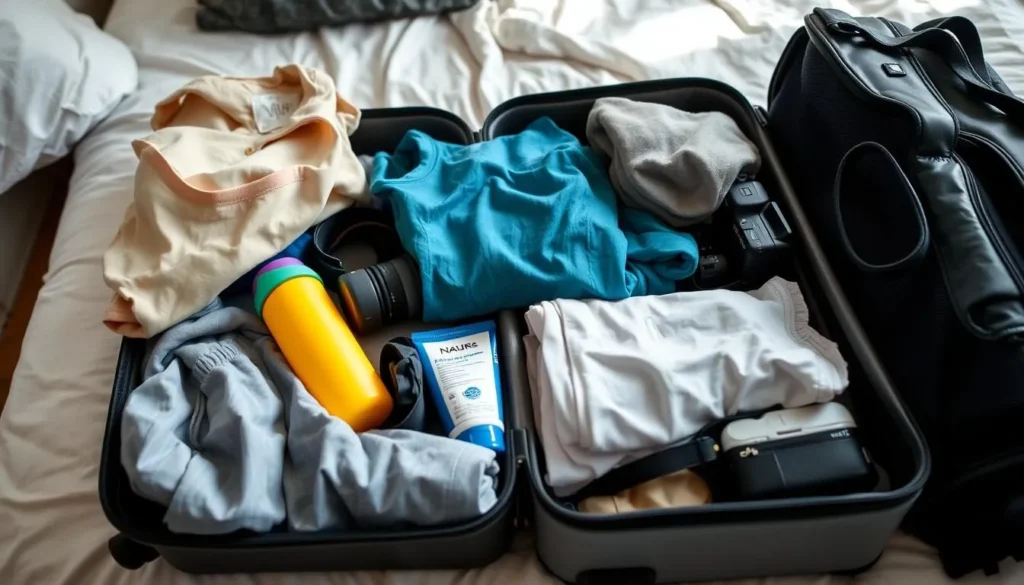
Money Matters
- The Australian dollar (AUD) is the official currency of Nauru
- There are no ATMs on the island, so bring sufficient cash
- Credit cards are accepted at major hotels but not widely elsewhere
- Daily budget: $100-200 USD for mid-range travel
Communication
- English is widely spoken alongside Nauruan
- Mobile coverage is available through Digicel
- Internet access is limited and can be slow
- Consider purchasing a local SIM card upon arrival
Packing Essentials
What to Bring
- Lightweight, breathable clothing
- High-SPF sunscreen and hat
- Insect repellent
- Snorkeling gear (limited rental options)
- Medications and first-aid supplies
- Power adapter (Australia/New Zealand type)
- Reusable water bottle
What to Avoid
- Revealing clothing for public areas
- Excessive electronics (limited charging options)
- Heavy clothing or footwear
- Unnecessary valuables
- Single-use plastics
Ready for Your Nauru Adventure?
Start planning your unique journey to one of the world’s least visited countries.
A Journey Like No Other
Visiting Yaren, Nauru offers a travel experience that few will ever have. This tiny Pacific nation may not feature on most travelers’ bucket lists, but those who make the journey discover a place of surprising depth and character. From the historical significance of Command Ridge to the natural beauty of Anibare Bay and Buada Lagoon, Nauru’s attractions tell a story of resilience, cultural pride, and environmental change.
What makes Yaren truly special isn’t just its status as one of the world’s least visited capitals, but the authentic connections you’ll make with local people who rarely encounter tourists. In an age of overtourism and Instagram hotspots, Nauru offers something increasingly rare: a genuine encounter with a place and culture that remains largely untouched by the outside world.
Whether you’re an intrepid traveler seeking to visit every country on Earth or simply someone who appreciates destinations off the beaten path, Yaren, Nauru will reward you with memories and stories that few others can share. The journey may require more planning than typical vacation spots, but the unique experiences that await make every effort worthwhile.
The above is subject to change.
Check back often to TRAVEL.COM for the latest travel tips and deals.
